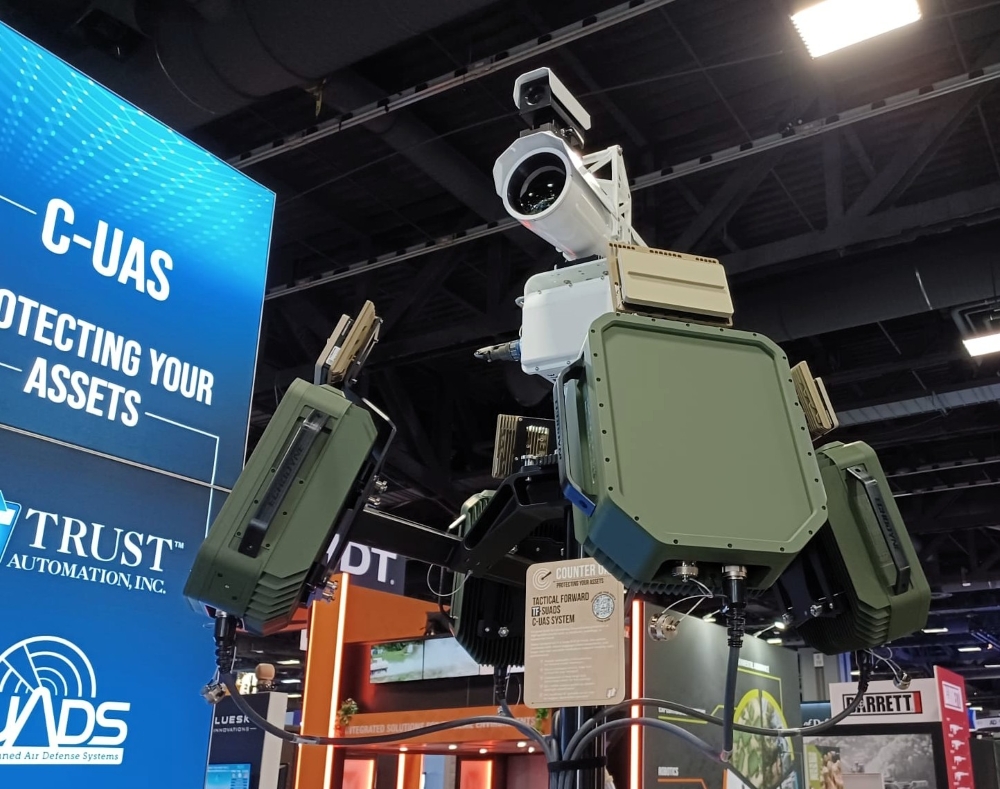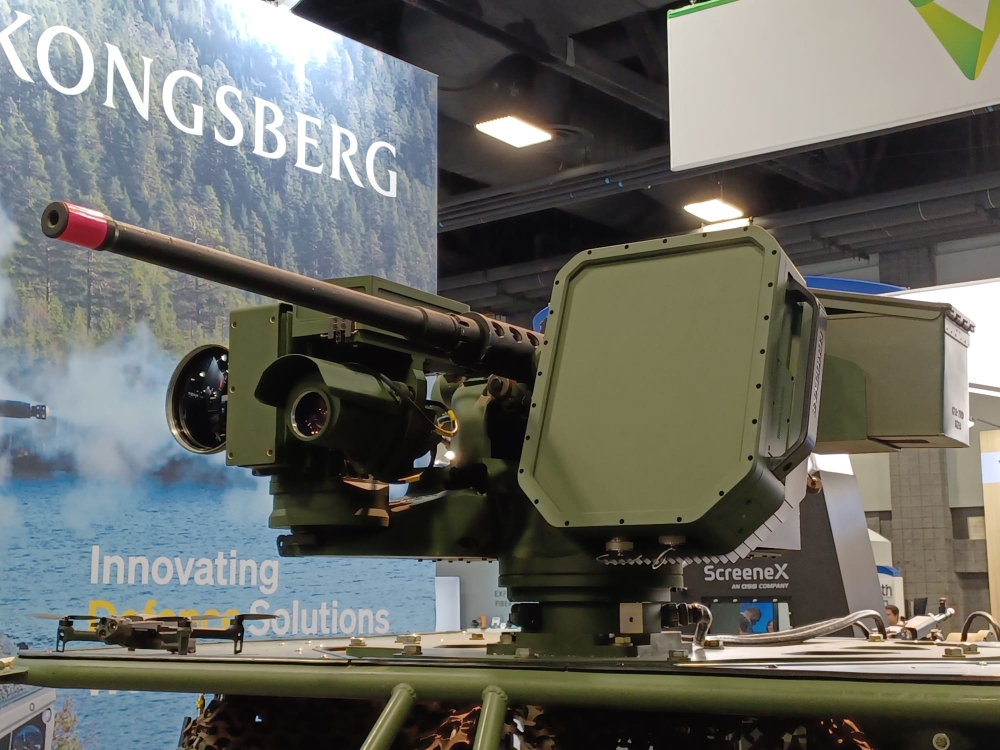
Recent drone incursions across European airspace have intensified scrutiny on perimeter defence capabilities and critical infrastructure protection. As unmanned aerial systems operations expand from unauthorized civilian flights to coordinated airspace violations, governments face mounting pressure to deploy effective counter-UAS solutions.
Advanced radar technologies have emerged as essential components in this evolving security landscape. During AUSA defence exhibition held in Washington, DC, FW MAG could empirically observe how numerous companies augmented their systems with C-UAS solutions, with multiple Echodyne radars on towers and/or vehicles.
This interview with Echodyne explores the technical realities of modern radar systems, their operational deployment around airports and sensitive facilities, and the layered detection strategies now defining counter-drone operations. Echodyne's insights illuminate how precision detection, accurate target classification, and networked radar arrays are fundamentally reshaping airspace security responses in an era of unprecedented aerial threats.
FW MAG recently spoke with Eben Frankenberg, co-founder and CEO of Echodyne, to discuss the growing threat of unmanned aerial systems (UAS) and the role of radar technology in protecting critical infrastructure and military forces. The conversation covered technical capabilities, regulatory challenges, and the company's expanding product portfolio in the counter-drone market.
FW MAG: We've observed UAS activity at various locations across Europe. In your opinion, is radar a viable solution for protecting critical infrastructure and mobile forces?
Eben Frankenberg: Absolutely. We're actively deploying this capability today in both theater environments and around critical infrastructure like airports. Radar is definitely one of the primary solutions for counter-UAS operations. However, for effective deployment, radar systems must accomplish several key functions. First, they need to detect and track drones with exceptional accuracy. Second - and critically - they must distinguish between drones and common airspace objects, like birds for example. Without this capability, false alarms become so frequent that operators quickly become overwhelmed and unable to respond effectively to genuine threats. A truly effective counter-UAS radar must detect and track targets with high precision while accurately classifying threats.
FW MAG: So, the central technical challenge is coverage area combined with precision, avoiding false alarms across large surfaces?
Eben Frankenberg: Exactly. You don't want operator fatigue from constant false alarms. The system must maintain signal discipline while ensuring no threats slip through.
FW MAG: How viable are radar solutions for protecting large facilities - from both technological and cost perspectives?
Eben Frankenberg: Counter-drone radars are certainly available in the market, and we manufacture systems specifically engineered for this mission. They deliver the detection, tracking, and classification capabilities I mentioned. The deployment scale depends entirely on facility size and required range. A small regional airport might need just a few radars, while major facilities like Paris' Charles de Gaulle or Chicago's O'Hare airports require a networked array of radars positioned around the perimeter to ensure complete coverage. Our product line addresses different operational requirements. We manufacture a smaller radar that detects consumer-class drones at approximately one kilometre - suitable for critical infrastructure sites such as power substations, electrical grid transfer stations, urban environments, or government buildings where surrounding structures create detection constraints. Our larger system achieves ranges of 3.5 to 4 kilometres against small consumer drones, making it ideal for airport perimeter deployment. Typically, 4 units provide full 360-degree coverage around a facility.
FW MAG: What frequency bands do your systems operate in?
Eben Frankenberg: Our larger radar operates in Ku-band, while the smaller model uses K-band. Higher frequencies provide accuracy advantages. They also allow us to build more compact antenna arrays, resulting in a smaller form factor than would be possible at lower frequencies while maintaining equivalent performance. Lower frequency systems would require substantially larger physical profiles to achieve similar capabilities.
FW MAG: Various counter-drone approaches exist. Some emphasize radar, others prioritize radio frequency detection. Which performs best, and do these technologies complement each other?
Eben Frankenberg: They absolutely complement each other. The most effective approach is a layered, multi-sensor system. At industry shows, you'll see our radars integrated into many different platform configurations. The typical detection sequence begins with radio frequency analysis. Systems scan for command-link frequencies between the drone and operator, or video-feed transmission signals. This RF approach effectively alerts operators to drone presence and provides general direction information. However, RF detection alone rarely provides pinpoint accuracy unless the signal is decrypted. There’s also the emergence of “dark drones”, which have been modified to skirt RF sensors and fly undetected. That's where radar becomes an essential “catch all” sensor layer, as it delivers precise targeting data for response coordination and can detect drones of all makes, models, and sizes no matter the weather or lighting conditions.

FW MAG: How will these growing discussions around drone protection impact Echodyne? What developments should we anticipate: increased production, new products, or both?
Eben Frankenberg: Definitely both. We've experienced substantial increases in production demand from both military and commercial-civil sectors simultaneously. Market expansion has also accelerated integrator participation. We typically work through system integrators who combine our radars with RF detection systems and cameras to deliver unified solutions. As demand grows, we're investing heavily in software architecture to streamline integrator partnerships, since many view our products as market-leading and prioritize inclusion in their integrated offerings.
We currently manufacture two distinct radar platforms. It wouldn't surprise me to see additional systems in the future, each addressing specific operational scenarios and requirements.
FW MAG: What new features should we anticipate?
Eben Frankenberg: Generally speaking, longer range and improved accuracy. Our current range and accuracy performance is excellent. Nevertheless, we do hear from some customers that they are interested in extended-range capabilities, which is interesting from a technical standpoint.
Others prioritize form factor reduction. Both represent valid market demands. Scaling both directions presents engineering challenges, but we've demonstrated internally and to customers that we can produce systems across different sizes and performance levels. We'll likely continue developing in these two directions.
FW MAG: What's the typical development timeline for a radar system like yours?
Eben Frankenberg: Development isn't quick. We're looking at timelines measured in many months, generally exceeding one year, potentially longer for modified variants. Additionally, we're advancing our software capabilities. Recently, we announced EchoWare, a new software platform designed to work with our product ecosystem.EchoWare enables integrators to seamlessly integrate with our radars, manage networked radar arrays, and control system operations.
FW MAG: What is your development roadmap?
Eben Frankenberg: Our development roadmap is entirely market-driven and based on demonstrated customer requirements. It encompasses three elements: scalable radar designs in different sizes, expanded software functionality, and entirely new products for demanding customer requirements.
FW MAG: Thank you for your insights!
Follow us on Telegram, Facebook and X.









.png)
